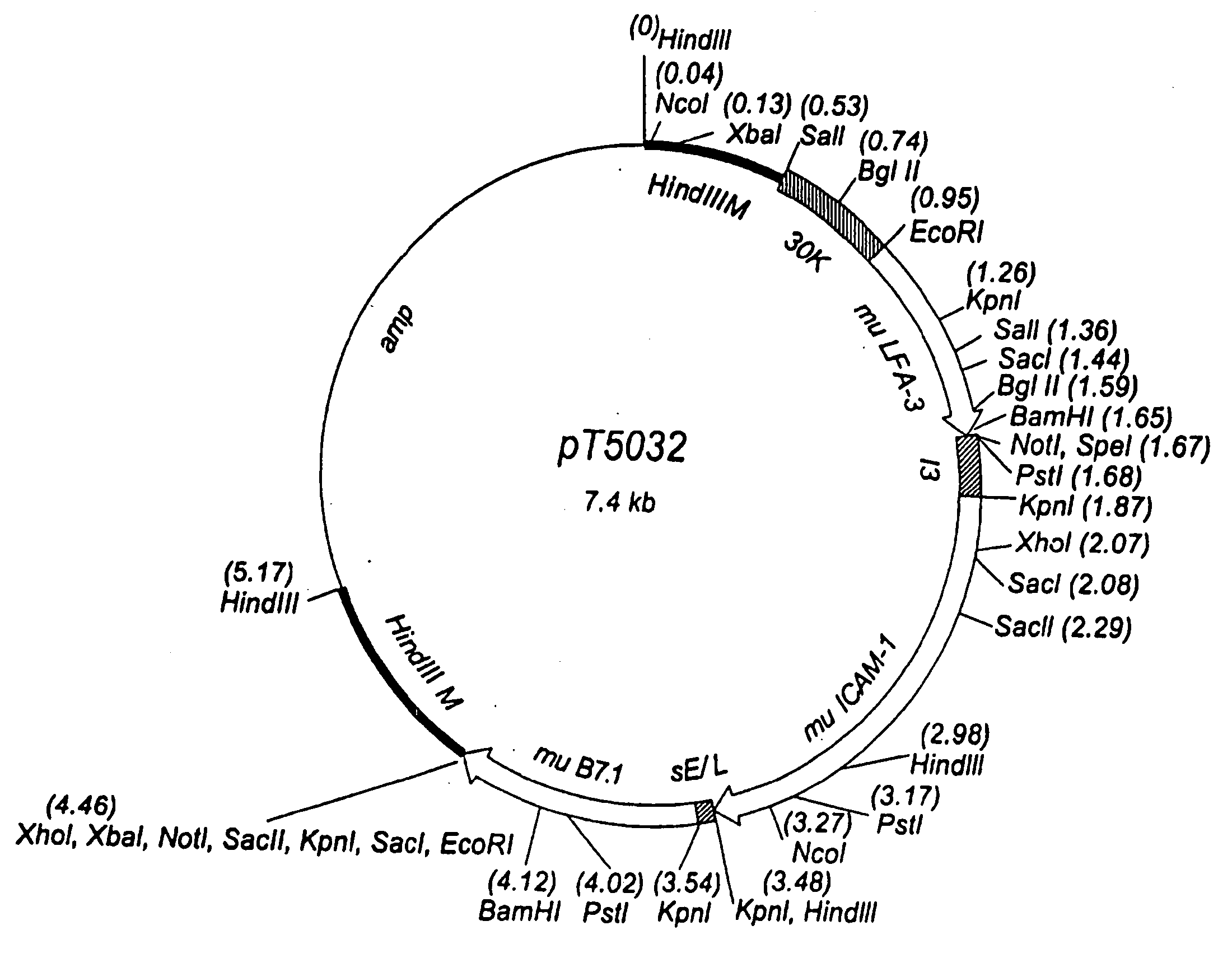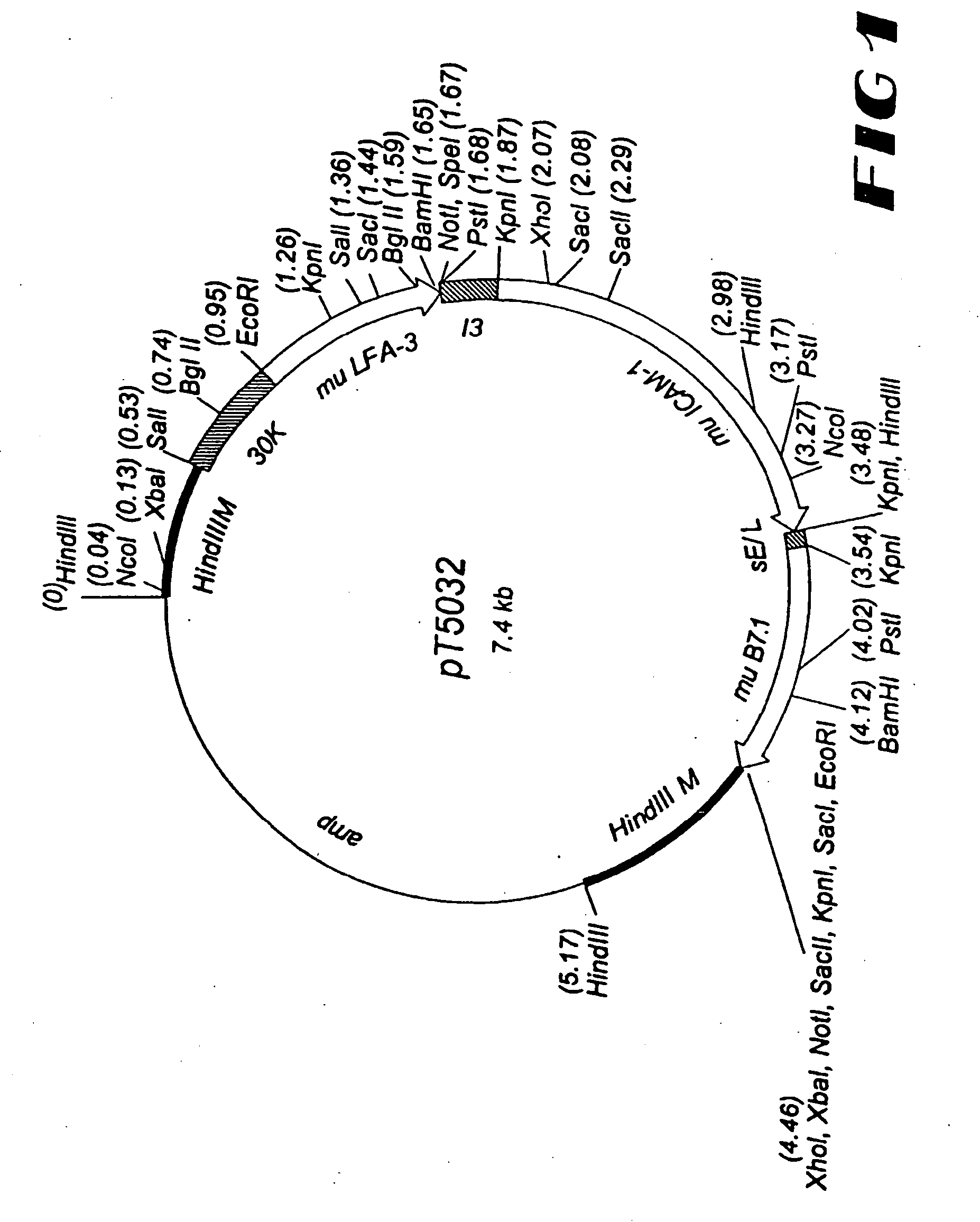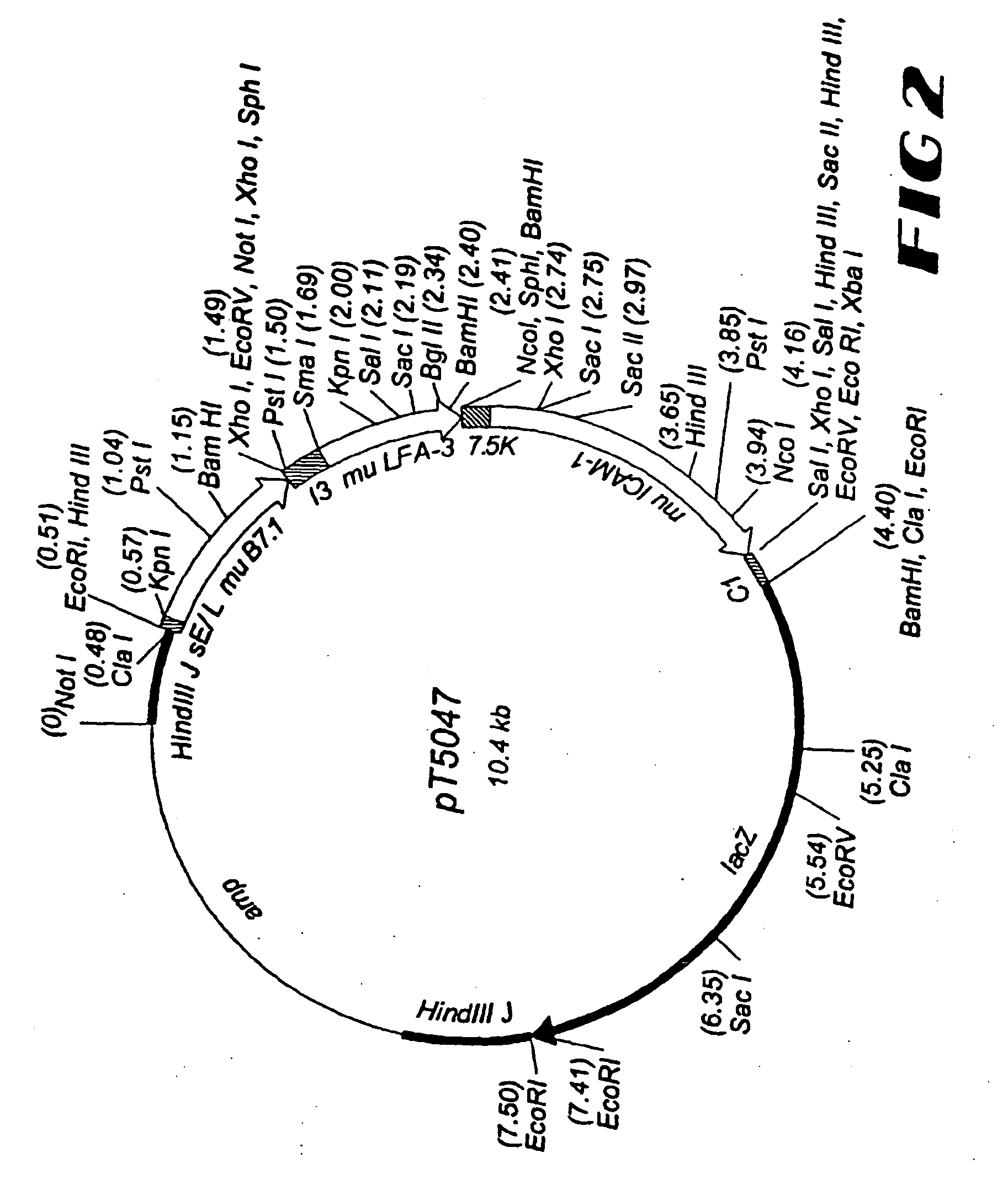Carcinoembryonic antigen (CEA) peptides
a technology of carcinoembryonic antigen and peptide, which is applied in the field of new modified cea agonist (or antagonist) peptide, polypeptide and protein, can solve the problems of difficult to examine the relative potency of individual costimulatory molecules during the induction of t-cell proliferation, the inability to co-infect three or more viruses, and the inability to selectively infect the same cell. statistically diminished probability of infection by three or more viruses
- Summary
- Abstract
- Description
- Claims
- Application Information
AI Technical Summary
Benefits of technology
Problems solved by technology
Method used
Image
Examples
example 4
Generation of Recombinant Vaccinia rV-MUC-1 / TRICOM(mu)
[0425] For the generation of rV-MUC-1 / TRICOM(mu), a plasmid vector is constructed to direct insertion of the foreign sequences into the vaccinia genome. The MUC-1 gene, the murine LFA-3 gene, the murine ICAM-1 gene, and the murine B7.1 gene are under the control of a multiplicity of promoters. These foreign sequences are flanked by DNA sequences from the vaccinia genome into which the foreign sequences are to be inserted. The generation of recombinant vaccinia virus is accomplished via homologous recombination between vaccinia sequences in the vaccinia genome and the corresponding sequences in the plasmid vector in vaccinia-infected cells transfected with the plasmid vector. Recombinant plaques are picked from the cell monolayer under selective conditions and their progeny are further propagated. Additional rounds of plaque isolation and replating result in the purification of the desired recombinant virus.
example 5
Generation of Recombinant Vaccinia rV-CEA / TRICOM(mu) No. vT172
[0426] For the generation of rV-CEA / TRICOM(mu), a plasmid vector, designated pT5031, was constructed to direct insertion of the foreign sequences into the M2L (30K) gene, which is located in the Hind III M region of the vaccinia genome (see FIG. 3). The CEA gene is under the control of the 40K promoter (13), the murine LFA-3 gene is under the control of the 30K promoter, the murine ICAM-1 gene is under the control of the I3 promoter, and the murine B7.1 gene is under the control of the sE / L promoter. These foreign sequences are flanked by DNA sequences from the Hind III M region of the vaccinia genome, including the vaccinia K1L host range gene. vTBC33, described above, was used as the parental virus in the construction of the recombinant vaccinia virus. The generation of recombinant vaccinia virus was accomplished via homologous recombination between vaccinia sequences in the vTBC33 vaccinia genome and the correspondin...
example 6
Generation of Recombinant Fowlpox, rF-TRICOM(mu) No. vT222
[0427] The origin of parental fowlpox virus used for the generation of recombinants was plaque-purified from a vial of a USDA-licensed poultry vaccine, POXVAC-TC, which is manufactured by Schering-Plough Corporation. The starting material for the production of POXVAC-TC was a vial of Vineland Laboratories' chicken embryo origin Fowlpox vaccine, obtained by Schering-Plough. The virus was passaged twice on the chorioallantoic membrane of chicken eggs to produce a master seed virus. The master seed virus was passaged 27 additional times in chicken embryo fibroblasts to prepare the POXVAC-TC master seed. To prepare virus stocks for the generation of POXVAC-TC product lots, the POXVAC-TC master seed was passaged twice on chicken embryo fibroblasts. One vial of POXVAC-TC, Serial # 96125, was plaque-purified three times on primary chick embryo dermal cells.
[0428] For the generation of rF-TRICOM(mu), a plasmid vector, designated p...
PUM
| Property | Measurement | Unit |
|---|---|---|
| Fraction | aaaaa | aaaaa |
| Fraction | aaaaa | aaaaa |
| Fraction | aaaaa | aaaaa |
Abstract
Description
Claims
Application Information
 Login to View More
Login to View More - R&D
- Intellectual Property
- Life Sciences
- Materials
- Tech Scout
- Unparalleled Data Quality
- Higher Quality Content
- 60% Fewer Hallucinations
Browse by: Latest US Patents, China's latest patents, Technical Efficacy Thesaurus, Application Domain, Technology Topic, Popular Technical Reports.
© 2025 PatSnap. All rights reserved.Legal|Privacy policy|Modern Slavery Act Transparency Statement|Sitemap|About US| Contact US: help@patsnap.com



